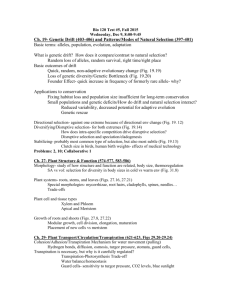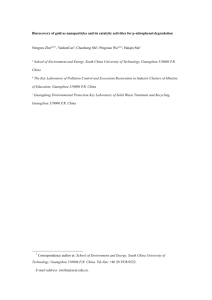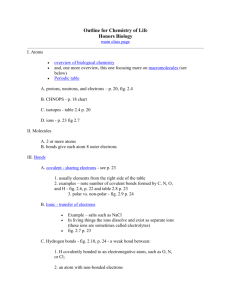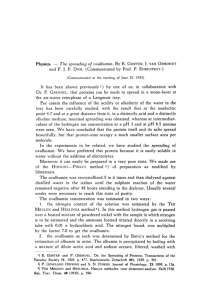Home Work 5 5-1 In earth`s lower atmospheric there are negative
advertisement
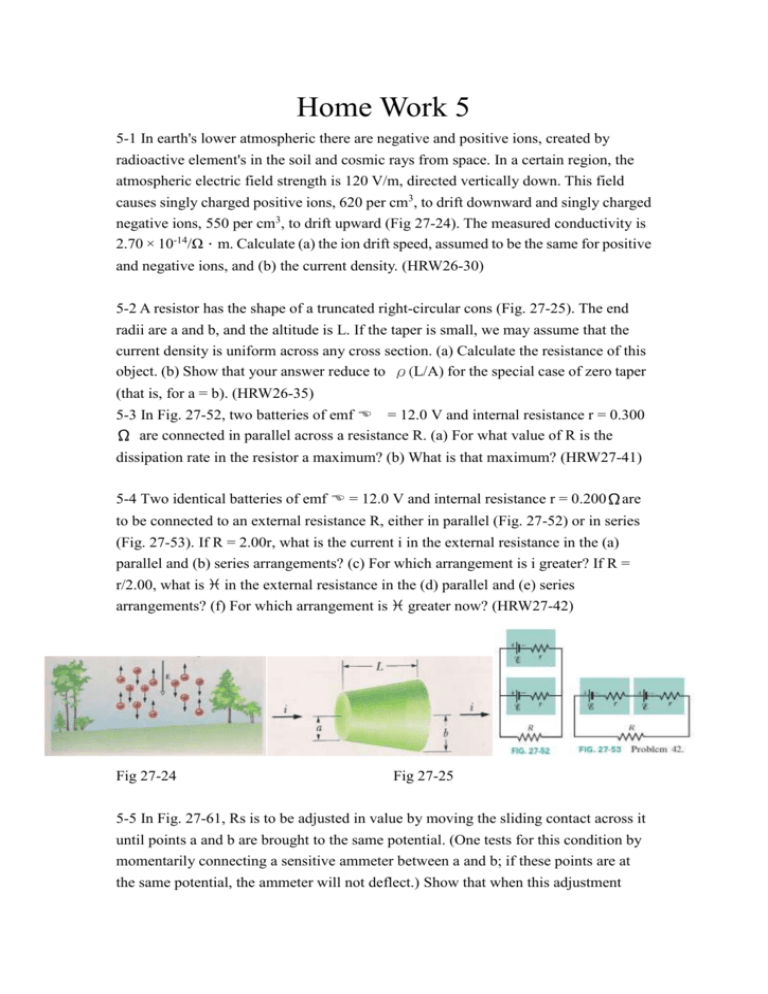
Home Work 5 5-1 In earth's lower atmospheric there are negative and positive ions, created by radioactive element's in the soil and cosmic rays from space. In a certain region, the atmospheric electric field strength is 120 V/m, directed vertically down. This field causes singly charged positive ions, 620 per cm3, to drift downward and singly charged negative ions, 550 per cm3, to drift upward (Fig 27-24). The measured conductivity is 2.70 × 10-14/Ω.m. Calculate (a) the ion drift speed, assumed to be the same for positive and negative ions, and (b) the current density. (HRW26-30) 5-2 A resistor has the shape of a truncated right-circular cons (Fig. 27-25). The end radii are a and b, and the altitude is L. If the taper is small, we may assume that the current density is uniform across any cross section. (a) Calculate the resistance of this object. (b) Show that your answer reduce to ρ(L/A) for the special case of zero taper (that is, for a = b). (HRW26-35) 5-3 In Fig. 27-52, two batteries of emf = 12.0 V and internal resistance r = 0.300 Ω are connected in parallel across a resistance R. (a) For what value of R is the dissipation rate in the resistor a maximum? (b) What is that maximum? (HRW27-41) 5-4 Two identical batteries of emf = 12.0 V and internal resistance r = 0.200Ωare to be connected to an external resistance R, either in parallel (Fig. 27-52) or in series (Fig. 27-53). If R = 2.00r, what is the current i in the external resistance in the (a) parallel and (b) series arrangements? (c) For which arrangement is i greater? If R = r/2.00, what is in the external resistance in the (d) parallel and (e) series arrangements? (f) For which arrangement is greater now? (HRW27-42) Fig 27-24 Fig 27-25 5-5 In Fig. 27-61, Rs is to be adjusted in value by moving the sliding contact across it until points a and b are brought to the same potential. (One tests for this condition by momentarily connecting a sensitive ammeter between a and b; if these points are at the same potential, the ammeter will not deflect.) Show that when this adjustment is made, the following relation holds: Rx = RsR2/R1. An unknown resistance (Rx) can be measured in terms of a standard (Rs) using this device, which is called a Wheatstone bridge. (HRW27-55) 5-6 (a) If points a and b in Fig. 27-61 are connected by a wire of resistance r, show that the current in the wire is Where is the emf of the ideal battery and R = R1 = R2. Assume that R0 equals zero. (b) Is this formula consistent with the result of Problem 55? (HRW27-111)








